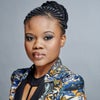
To say that Marvel's "Black Panther" is one of this year's most anticipated films would be an understatement.
Following the star-studded premiere, fans are sure to be flocking to cinemas worldwide on Friday.
But before you settle into the cinema seats with your popcorn...
HERE ARE 12 FUN FACTS ABOUT 'BLACK PANTHER':
1. First appearance
Marvel's Black Panther character made his debut in the comic book Fantastic Four Vol. 1 Issue 52, published in 1966.
2. Strong fierce women
An important part of the Black Panther lore incorporated into the film is the Dora Milaje, the cadre of strong, fierce women who serve as the personal security force to the king and royal family. These tall, statuesque, bald warrior women who move as one command attention wherever they go.
3. A pool of actors, stuntwomen and Broadway dancers
Led by Danai Gurira's character, Okoye, the Dora Milaje security force features an international contingent of women from all over the world. These include Florence Kasumba returning to play Ayo, a character who first appeared in "Captain America: Civil War". The Dora Milaje were cast from a pool of actors, stuntwomen and Broadway dancers, so that each individual Dora could have specialised skills that they brought to the table.
4. The official language of Wakanda
It was decided early on that isiXhosa, one of the official languages of South Africa, would be the language of Wakanda. A precedent had been set in "Captain America: Civil War", when celebrated South African actor John Kani, who portrayed King T'Chaka, used his native tobgue. Chadwick Boseman, who plays T'Challa/Black Panther, picked it up from him as well.
5. Using African drums
The cast and stunt team practiced with African drums played by musician Jabari Exum, so that their movements would have a musical quality found in many African-based martial arts.
6. Learning to ride a rhino
Actor Daniel Kaluuya learned how to ride a horse as practice to simulate riding W'Kabi's armoured rhino in the film.
7. South African father-and-son acting duo
South African actor Atandwa Kani plays the character of Young T'Chaka, to his father and celebrated South African actor John Kani's King T'Chaka.
8. Stunt work
The cast did the bulk of the fight work that is seen on film. Chadwick Boseman, whose skill set includes a comprehensive martial arts background, knew what he was in for when he and all the other actors had to attend a "boot camp" to prepare them for the physical aspects of their roles.
9. Creating Killmonger's scars
Michael B Jordan, who plays Erik Killmonger, spent about two-and-a-half hours in the special-effects makeup chair every day, while makeup designer Joel Harlow and three other makeup artists applied close to 90 individually sculpted silicone moulds to his upper body. This "scarification" application process entails transferring each mould and then blending and painting them to match Jordan's skintone. Each of Killmonger's scars represents a "notch" of his kills over the years.
10. Building the set
The majority of the Wakanda sets were constructed on soundstages at Pinewood Studios in Atlanta, including the tribal council, the Wakandan design group, Shuri's hive of research and development for the vibranium rich country, the ancient subterranean Hall of Kings; and most notably Warrior Falls, the ceremonial heart of Wakanda's revered traditions.
11. Matching the rocks of Oribi Gorge in South Africa
More than 700 cubic metres of foam went into the Warrior Falls set, which was sculpted to match the rocks in Oribi Gorge in South Africa.
12. The perfect action sequence
Director Ryan Coogler wanted the South Korea action sequence to be seamless, so he had an editor on set cutting footage in real time. This is not often done during production, but Coogler felt it was the best way to capture all the action, stunts and special effects in one frame on time.
